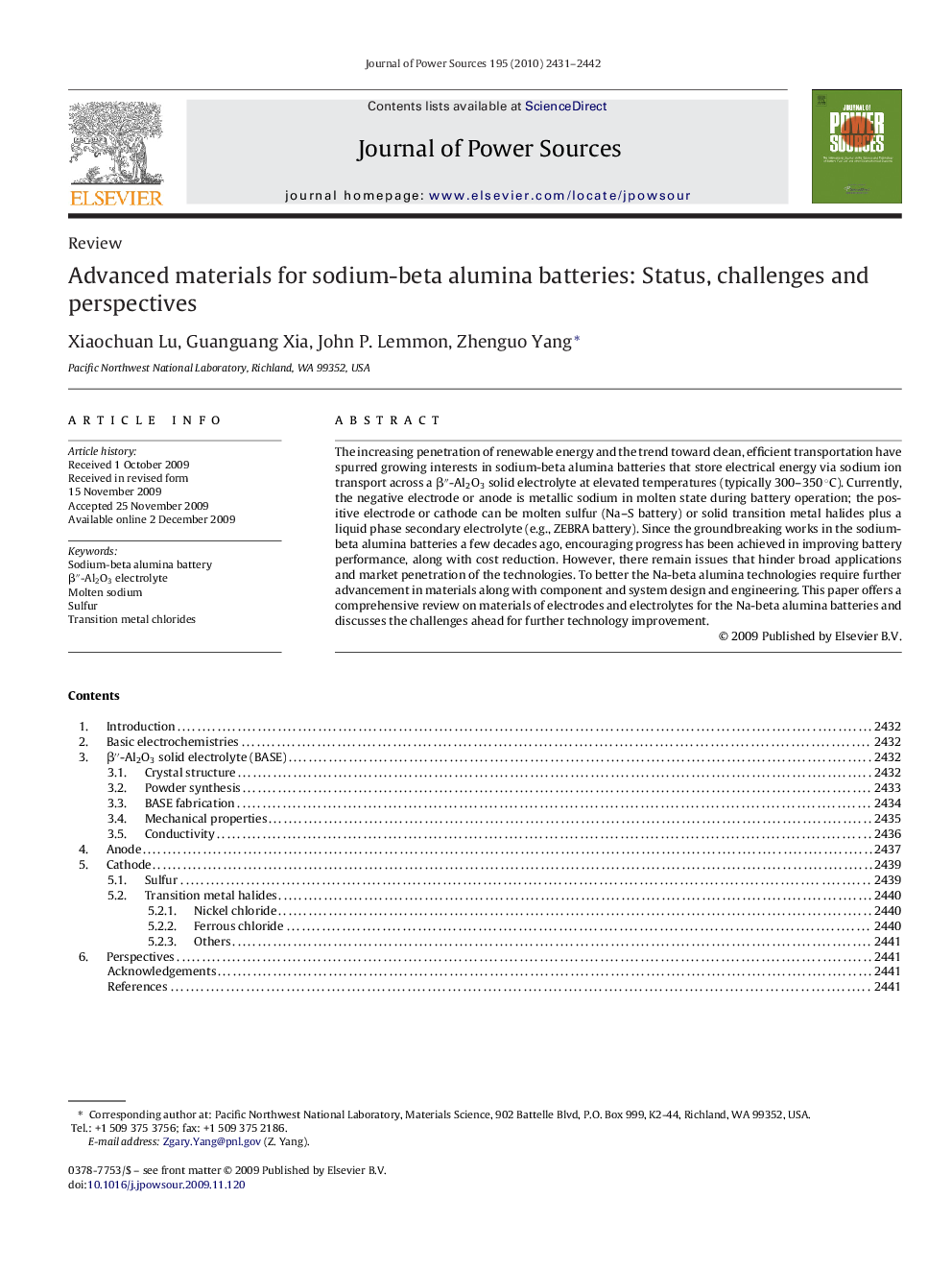| Article ID | Journal | Published Year | Pages | File Type |
|---|---|---|---|---|
| 1284984 | Journal of Power Sources | 2010 | 12 Pages |
The increasing penetration of renewable energy and the trend toward clean, efficient transportation have spurred growing interests in sodium-beta alumina batteries that store electrical energy via sodium ion transport across a β″-Al2O3 solid electrolyte at elevated temperatures (typically 300–350 °C). Currently, the negative electrode or anode is metallic sodium in molten state during battery operation; the positive electrode or cathode can be molten sulfur (Na–S battery) or solid transition metal halides plus a liquid phase secondary electrolyte (e.g., ZEBRA battery). Since the groundbreaking works in the sodium-beta alumina batteries a few decades ago, encouraging progress has been achieved in improving battery performance, along with cost reduction. However, there remain issues that hinder broad applications and market penetration of the technologies. To better the Na-beta alumina technologies require further advancement in materials along with component and system design and engineering. This paper offers a comprehensive review on materials of electrodes and electrolytes for the Na-beta alumina batteries and discusses the challenges ahead for further technology improvement.
